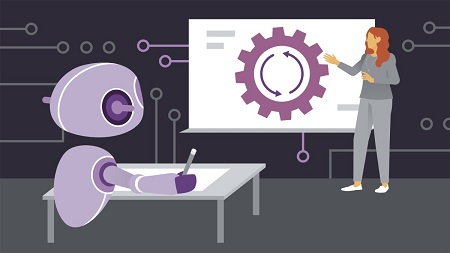English | MP4 | AVC 1280×720 | AAC 48KHz 2ch | 54m 22s | 491 MB
Deep Learning as a technology has grown leaps and bounds in the last few years. More and more AI solutions use Deep Learning as their foundational technology. Studying this technology, however, presents several challenges. IT professionals from varying backgrounds need a simplified resource to learn the concepts and build models quickly. In this course, instructor Kumaran Ponnambalam provides a simplified path to understand various optimization and tuning options available for deep learning models and shows you how to use these options to improve models. He begins by reviewing Deep Learning, including artificial neural networks and architectures. Next, Kumaran discusses the process of hyper parameter tuning. He examines the building blocks of neural networks and the levers available to tune them. Kumaran offers recommendations and best practices. Then he concludes with an end-to-end tuning example.
Table of Contents
Introduction
1 Optimizing neural networks
2 Prerequisites for the course
3 Setting up exercise files
Introduction to Deep Learning Optimization
4 What is deep learning
5 Review of artificial neural networks
6 An ANN model
7 Model optimization and tuning
8 The deep learning tuning process
9 Experiment setups for the course
Tuning the Deep Learning Network
10 Epoch and batch size tuning
11 Epoch and batch size experiment
12 Hidden layers tuning
13 Determining nodes in a layer
14 Choosing activation functions
15 Initializing weights
Tuning Back Propagation
16 Vanishing and exploding gradients
17 Batch normalization
18 Optimizers
19 Optimizer experiment
20 Learning rate
21 Learning rate experiment
Overfitting Management
22 Overfitting in ANNs
23 Regularization
24 Regularization experiment
25 Dropouts
26 Dropout experiment
Model Tuning Exercise
27 Tuning exercise Problem statement
28 Acquire and process data
29 Tuning the network
30 Tuning backpropagation
31 Avoiding overfitting
32 Building the final model
Conclusion
33 Continuing your deep learning journey
Resolve the captcha to access the links!
